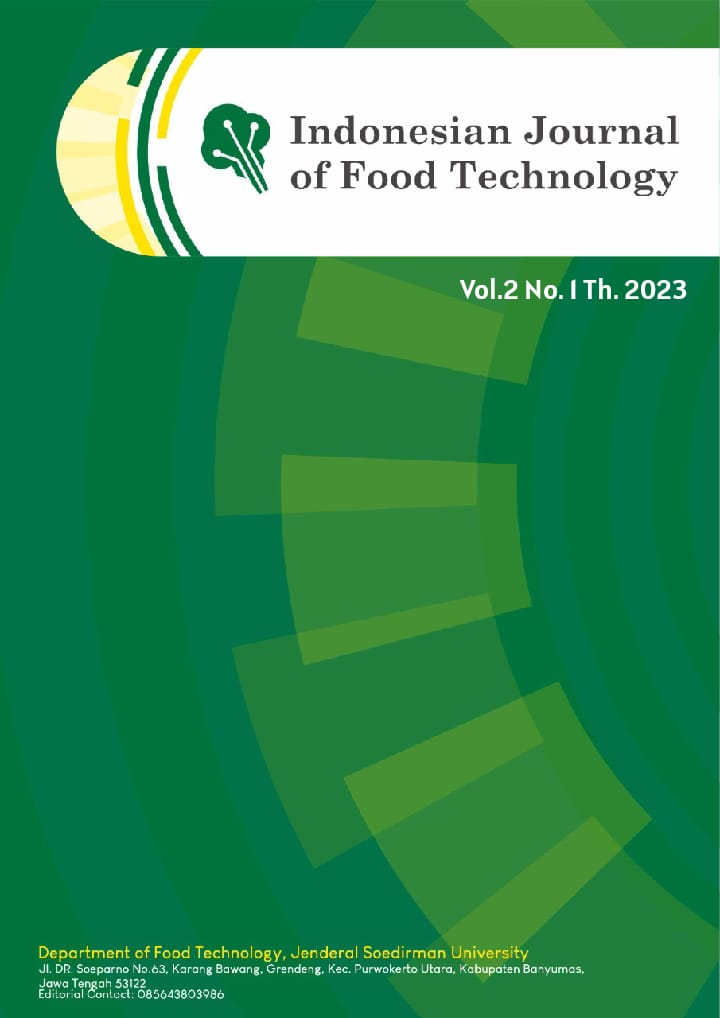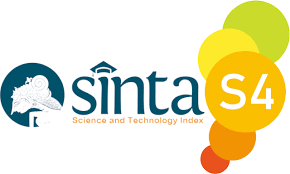Qualitative Test of Rhodamine B and Methanyl Yellow Using the Spot test Method on Packaged Beverage at The Center for Drug and Food Control Denpasar
Abstract
Rhodamine B and Methanyl Yellow are synthetic dyes that are widely used in the textile and paper industries. Rhodamine B is a synthetic dye that produces a red color and Methanyl Yellow is a synthetic dye that produces a yellow color. Based on the decision of the Ministry of Health (Permenkes) No. 239/Menkes/Per/V/85 Rhodamin B and Methanyl Yellow are designated as substances whose use is prohibited in food products. The use of this dye if consumed can cause irritation to the respiratory tract, skin, eyes, digestive tract, the danger of liver cancer, and as a tumor-triggering agent. So based on the above problems it is necessary to identify Rhodamin B and Methanyl Yellow in food products. The method that has been developed and used in the identification of Rhodamine B and Methanyl Yellow is using a qualitative descriptive analysis technique with the spot test method. This research was conducted by direct observation to the field to find indications for the use of Rhodamine B and Methanol Yellow to be tested. This study aims to determine whether or not the use of Rhodamine B and Methanyl Yellow in packaged beverage products at the Denpasar Food and Drug Supervisory Agency. The research samples were 2 packaged drinks which had striking red and striking yellow colors. The results showed that none of the samples contained Rhodamine B and Methanol Yellow synthetic dyes.
References
Andayani, D., & Adisaputra, H. (2017). Analisis Zat Pewarna Rhodamin B pada Gula Kapas Merah yang Dijual di Kota Mataram Tahun 2013. Jurnal Ilmu Kesehatan Dan Farmasi, 1(1). https://doi.org/10.31227/osf.io/h7waq
Aprilia, A. (2015). Pengetahuan, Sikap Dan Faktor-Faktor Yang Mempengaruhi Pedagang Jajanan Anak Sekolah Dasar Negeri Terhadap Penggunaan Pewarna Metanil Yellow Di Kecamatan Sukarame Bandar Lampung Tahun 2015. Journal Agromedicine.
Aritonang, A. (2012). Pelaksanaan Higiene Sanitasi Pengolahan dan Pemeriksaan Zat Pewarna Metanil Yellow pada Hasil Industri Pengolahan Tempe yang Dijual di Pasarsei Sikambing Kota Medan Tahun 2012 [Thesis]. Universitas Sumatera Utara.
Azizahwati, Kurniadi, M., & Hidayati, H. (2007). Analisis Zat Warna Sintetik Terlarang untuk Makanan yang Beredar di Pasaran. Pharmaceutical Sciences and Research, 4(1). https://doi.org/10.7454/psr.v4i1.3409
Cahyadi, V. (2015). Peraturan Menteri Kesehatan Republik Indonesia Nomor: 239/Men.Kes/Per/V/85 Tentang Zat Warna Tertentu Yang Dinyatakan Sebagai Bahan Berbahaya. DocPlayer. https://docplayer.info/31913718-Peraturan-menteri-kesehatan-republik-indonesia-nomor-239-men-kes-per-v-85-tentang-zat-warna-tertentu-yang-dinyatakan-sebagai-bahan-berbahaya.html
Cahyadi, W. (2006). Analisis & Aspek Kesehatan Bahan Tambahan Pangan. Bumi Aksara.
Etika, S. B., & Nasra, E. (2021). Utilization of C-Cinnamal Calix[4] Resorcinarene as Adsorbent for Methanil Yellow. Journal of Physics: Conference Series, 1788(1), 234–237. https://doi.org/10.1088/1742-6596/1788/1/012012
Florentina, E., & Eka, F. (2014). Pengaruh Pemberian Metanil Yellow Peroral Dosis Bertingkat Selama 30 Hari terhadap Gambaran Histopatologi Esofagus Mencit Balb/C. Jurnal Kedokteran Diponegoro, 3(1), 137764.
Kristanti, H. (2012). Penyakit Akibat Kelebihan dan Kekurangan Vitamin, Mineral dan Elektrolit (1st ed.). Citra Pustaka.
Oktriana, S., Nurul Aeni, S. R., & Sari, I. P. (2022). Validation of UV-Visible Spectrophotometry for Measuring Rhodamine B Content in Crackers. Journal of Applied Food and Nutrition, 2(1), 6–15. https://doi.org/10.17509/jafn.v2i1.41829
Pergizi Pangan Indonesia. (2022, May 25). Permenkes No 33 Tahun 2012 Tentang Bahan Tambahan Pangan. Pergizi Pangan Indonesia. https://pergizi.org/permenkes-no-33-tahun-2012-tentang-bahan-tambahan-pangan/
Pertiwi, D., Sirajuddin, S., & Najamuddin, U. (2014). Analisis Kandungan Zat Pewarna Sintetik Rhodamin B Dan Methanyl Yellow Pada Jajanan Anak Di Sdn Kompleks Mangkura Kota Makassar Analysis of the Content of Dye Synthetic Substances Rhodamine B and Methanyl Yellow in the Snacks of Children in Sdn Kompleks Mangkura Makassar City. Analisis Kandungan Zat Pewarna Sintetik Rhodamin B Dan Methanyl Yellow Pada Jajanan Anak Di SDN Kompleks Mangkura Kota Makasar, 1–14.
Wardani, R. S. (2017). Identifikasi Tes Kit Methanil Yellow pada Beberapa Makanan yang Tidak Bermerk di Pasar Wilayah Mojosongo [Thesis]. Universitas Setia Budi Surakarta.
Winarno, F. G. (1997). Kimia Pangan dan Gizi. Gramedia Pustaka Utama.
Yugatama, A., & Hapsari, T. (2021). Analysis of Rhodamine B Content in “geplak” Marketed in Yogyakarta City in 2019. Journal of Physics: Conference Series, 1912(1). https://doi.org/10.1088/1742-6596/1912/1/012049
Zhou, J., Huang, Y., Xu, J., Chen, L., Yin, Q., Mao, Y., Lin, K., Zhou, Y., Hua, X., & Wang, S. (2019). Rhodamine B Purity Certified Reference Material. IOP Conference Series: Earth and Environmental Science, 300(2). https://doi.org/10.1088/1755-1315/300/2/022014











